David Suzuki's Blog, page 55
September 22, 2015
It's a bird, it's a plane, it's... time to get kids outside!
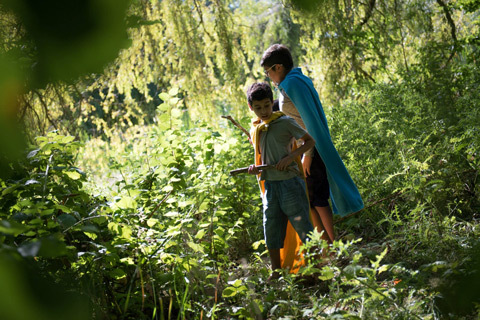
Summer, where did you go? It seems I blinked and my alarm-clock-free mornings, warm beach days and carefree weekends were instantly gone. Now, it's the third week of the back-to-school rush and my kids and I miss you more than ever. From climbing trees to slouching over desks -- the transition from summer sovereignty to school routines hasn't been easy in my house.
How can we strike a balance between school routines and spending time outdoors?
Even though back-to-school can make your family back-to-busy, it's important to ensure children don't disconnect from one of the most important classrooms -- the outdoors. When I was a kid, Mother Nature was one of my favorite educators. I climbed trees, played in the dirt and lifted rocks to discover the "newest" species. I was often free to explore, run and follow my own guidelines. My parents encouraged me to get outside and play and I feel this helped me develop mentally, physically and emotionally. There's nothing like being perched in a tree or running through fields of grass -- you almost believe you're a superhero.
But how many children are playing outside these days? How many parents are encouraging daily outdoor play?
Children today spend less time outdoors than any other generation in history. A U.S. research study of 830 mothers nationwide showed that children today spend considerably less time playing outdoors than their mothers did as kids and reveals several reasons for this decline, such as dependence on television and digital media and parental concerns about crime and safety. I can hear the "helicopters" hovering overhead...

Dr. Shimi Kang with her three beautiful kids. Dr. Kang is a Harvard trained psychiatrist, award winning researcher, speaker, and #1 Bestselling author of The Dolphin Parent: A Guide to Raising Healthy, Happy, and Self- Motivated Kids (Penguin Books).
But, this isn't just a concern for parents. This has to include teachers and educational administrators, too! In some countries, children spend almost 1,000 hours in the classroom each year. Doesn't that seem like an awful long time to sit in a desk or on a classroom carpet? Plus some schools have scaled back recess times because of instructional pressures and demands to squeeze as much academia into the school day, though research shows that recess benefits children's cognitive, social-emotional and gross-motor skills. It's an interesting parallel that more and more children are being diagnosed with attention deficit disorders. Let's face it -- children are not moving around enough, playing enough or getting outside enough. It is no wonder children have a hard time sitting still or not fidgeting! They need hours of play outdoors to establish a healthy sensory system and to support higher-level classroom learning. The message is clear: Kids need nature to help them reduce stress and live happier, healthier and more motivated lives.
So, how can we -- parents, educators, grandparents and caregivers -- help our children get back outside?
Let's give our kids the same feeling we once felt -- soaring, exploring and playing like superheroes. The David Suzuki Foundation's four-week Back to School Superhero Challenge provides materials to help get kids back outside to learn about critical environmental issues. By completing these challenges, you and your child can learn how you're connected with the environment and how to make a "super" eco-friendly difference in your community. Teach your kids the importance of protecting and preserving nature now while improving their physical and mental health.
Hey! Want more DSF? Join David Suzuki on Facebook
September 17, 2015
How did the environment fare in the federal leaders' debate?

Despite the noise and frenzy, the leaders' debate supported the idea that the environment and economy are inextricably linked. Jobs, energy and environment, infrastructure, immigration, housing and taxation -- these were the economic issues under discussion and driving Canadian voters this federal election. We tuned into the Globe and Mail debate to see where the leaders stand on carbon pricing, climate change, green infrastructure and clean technology. Were leaders pitting the environment against the economy, or did they understand that a strong economy relies on a healthy environment?
Climate change
How are the leaders responding to the most pressing issue of our generation, climate change? Leaders differentiated themselves in their approaches on how to reduce greenhouse gases. NDP leader Thomas Mulcair said his party supports a national cap-and-trade approach as the only way to guarantee GHG reductions. Liberal leader Justin Trudeau would work with the provinces as they prepare commitments for the December climate summit in Paris but would avoid a national strategy and direction. And Conservative Leader Stephen Harper said he would continue with the sector-by-sector regulatory approach, which he said had decreased Canada's emissions while growing the economy. While pipelines were mentioned, oil sands weren't a big focus of discussion and we heard little about how leaders would deal with fossil fuel subsidies.
Infrastructure and transit funding
Infrastructure deficits to municipalities were acknowledged as an important issue, yet green infrastructure didn't get mentioned much. Various commitments were made for infrastructure support but it remains to be seen whether municipalities believe it will be enough to fill the gap. All leaders acknowledged that municipalities need transit funding but whether their commitments would be enough to move cities forward is unclear. What we know is that every dollar invested in public transit brings $3 worth of economic growth.
Clean technology
In a debate like this, clean technology should be a major point of discussion. As the fastest-growing sector in Canada, it can't be ignored, yet we didn't hear details about a renewable path with solar, wind and hydro. In the month left in this campaign, leaders will have to tell Canadians how they plan to help a sector that generated nearly $12 billion for the national economy in 2013.
Healthy environment
For the second debate in a row, Mulcair talked about his work in Quebec to enact legislation for the right to a healthy environment. Most Canadians believe these rights should be enshrined in our Charter of Rights and Freedoms, something more than 110 countries already enjoy.
No matter where you live in Canada, you've likely encountered the effects of climate change: floods in Calgary and Toronto, dry summers on the West Coast, low snow packs in the mountains and wildfires in the western provinces, along with disappearing traditional practices in the midst of melting northern ice sheets.
We have a choice and this election is a critical time to exercise it. Now is the time to embrace clean energy and green infrastructure, increase funding for transit and transportation solutions and bring nature into our communities. We can support leadership at the federal level to lower carbon emissions, create green jobs and grow clean technology businesses, the fastest-growing sector of our economy.
After all, we can't have a strong economy without a healthy environment.
And if the debate inspired you, write a letter to the editor of your local paper, using the three easy steps in our online tool.
YES, I'm voting on October 19.
Hey! Want more DSF? Join David Suzuki on Facebook
Seizing B.C.'s leadership opportunity on the clean economy and climate change
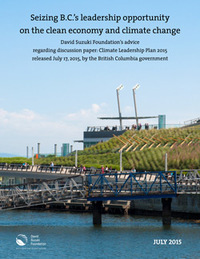
The David Suzuki Foundation is pleased to comment on the 2015 Climate Leadership Plan and to help build on the successful climate polices already established in British Columbia. Meeting the 2020 and 2050 legislated carbon reduction goals will take considerable effort and cooperation across the province. The open comment period provided by the government is valuable in considering as many voices as possible as the province tackles the climate challenge. Here at the David Suzuki Foundation we collaborate with Canadians from all walks of life, including government and business, to conserve our environment and find solutions that will create a sustainable Canada through science-based research, education and policy work. Our mission is to protect the diversity of nature and our quality of life, now and for the future.
Hey! Want more DSF? Join David Suzuki on Facebook
Will Generation Z give us superheroes for the planet?
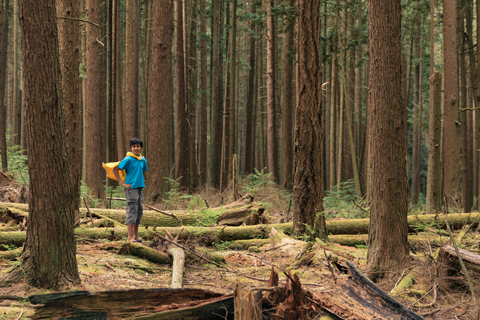
Snapchat and selfies, iPhones and iPads... There's no denying technology plays a major role in the lives of many 21st century children. With so many parents sharing photos of their children from birth and beyond, and kids creating Facebook accounts at age 13 and under, many young people are growing up with their entire lives documented on social media.
Although technological advances can facilitate education and learning, the long-term effects of digital living on children's health have yet to be determined. Many devices like smartphones are relatively new, especially in developing countries, but in North America, where some children get cellphones in Grade 3, Generation Z will spend more waking hours interacting in the digital world than any generation before.
It seems obvious: If your daily routine consists of constantly checking text messages and Facebook "likes", your ability to focus for long periods will probably decrease. With children spending half as much time in nature as in 1992, and teenagers sitting for close to eight hours a day in front of screens, our kids don't have much time for fresh air.
That's why the David Suzuki Foundation created this fall's Back to School Superhero Challenge. Participants receive a weekly outdoor activity and "superhero" mission that encourages environmental responsibility by getting kids outside to connect with nature.
A growing body of research confirms the health benefits of getting outside. Kids who spend time in nature every day are healthier, happier, more creative, less stressed and more alert than those who don't. As parents, grandparents, caregivers and educators, it's our responsibility to raise kids with healthy nature habits.
I remember growing up in London, Ontario, in the early 1950s. Back doors would open between 5:30 and 6 p.m., and parents would call their kids home for dinner. We'd be out playing in the park, empty lot or nearby ditch or creek. There wasn't a London television station, and the few folks with TV sets had to capture signals from Cleveland or Detroit and watch shadowy black-and-white images made worse by electronic snow. There were no computers, cellphones, iPods or digital anything. Our fun was outdoors.
Some of my earliest, fondest memories are of going fishing and camping with my dad. He was a great role model. He encouraged me to explore the outdoors, play in the dirt and discover all that nature had to offer. He instilled a deep love and appreciation of nature in me, one that I cherish and credit for my career.
I've tried to instill this love of nature in my children and grandchildren. From fishing trips to hikes to dinner table discussions about why there are fewer fish in the oceans, we've tried to guide them to care about issues that matter.
I'm proud to say it's paid off. As a marine biologist, my daughter Sarika is working to protect the oceans and the life they support. I've stood on protest lines against pipeline expansion with my daughter Tamiko and her kids, Midori and Tamo Campos. And I still recall with pride the speech my daughter Severn gave at the 1992 UN Earth Summit in Rio de Janeiro, Brazil, when she was just 12. She spoke with such conviction that delegates were moved to tears. More than 23 years later, Severn has two young children, and the video of her speech is still making the rounds, inspiring people around the world. Its popularity speaks to the power young people have to affect the world's most pressing issues.
I often worry what the future will hold for my grandchildren. I sometimes feel a sense of failure when I consider the planet they'll be inheriting. Will they run in a green forest and breathe clean air? Will they swim in clear waters and discover underwater creatures?
I also have faith that the next generation will include a lot of smart, savvy and socially conscious people who will help protect the planet that we've treated so badly. By helping young people get outdoors, care about others and make a difference, we won't just be raising healthier and happier children, we'll be raising a generation of superheroes for our planet.
SIGN UP FOR THE BACK TO SCHOOL SUPERHERO CHALLENGE.
Let's all get outside and save the world. You can sign up for the Back to School Superhero Challenge at getbackoutside.ca/.
Hey! Want more DSF? Join David Suzuki on Facebook
Where are they now? Left off the List revisited
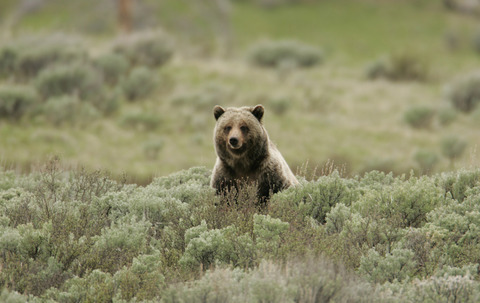
The western population of Grizzly bears has a COSEWIC status as special concern, but they are not listed on the Canada's Species at Risk Act. Here's a list of 150 other species with COSEWIC status not in the SARA registry. (Credit: Yellowstone National Park via Flickr)
In January 2007, David Suzuki Foundation senior scientist Scott Wallace and I wrote a report called Left off the List. It profiled eight species scientifically assessed by the independent body COSEWIC as at-risk but in limbo, often for years, waiting to be listed under the federal Species at Risk Act or denied listing altogether. The report highlighted the disproportionate number of unlisted northern and marine species.
The Species at Risk Act has the potential to provide species protection and habitat-protection measures, although it's often the case that these measures aren't implemented (or only are when groups such as the David Suzuki Foundation and Ecojustice take legal actions).
Our 2007 report profiled the Peary caribou (assessed as endangered), polar bear (assessed as special concern), western wolverine population (assessed as special concern), northwestern grizzly bear population (assessed as special concern), five populations of beluga whale (ranging from special concern to endangered), Interior Fraser coho salmon (assessed as endangered) and four populations of Atlantic cod (ranging from special concern to endangered).
Coming on nine years later, only the polar bear and Peary caribou have made it to the list. Lack of listing allows B.C. to continue the grizzly bear trophy hunt (It's time to end the grizzly bear trophy hunt), as well as continued fragmentation by industrial activity of the southern habitat of the wolverine.
Sadly, about 151 species in Canada are in limbo, waiting to be added to the list. (View species here.)
Although it might be one thing to delay road improvements or the passage of a bill to eradicate the nickel, delayed listings mean these species, despite having managed to eke out an existence for thousands of years, could now be facing the end of the line. The delays mean legal measures that could protect them from being killed or protect the habitat they need to survive are not in place.
Today, the David Suzuki Foundation and four other environmental organizations sent a letter to federal Environment Minister Leona Aglukkaq on behalf of four wild at-risk Canadian bees. Bees, like other pollinators, play an integral role in propagating the food we eat, from potatoes to peppers and squash to blueberries. They are at risk not only because of habitat loss, but also because of the systemic poisoning caused by neonicotinoid pesticides.
They, too, have been left off the list.
If we are to have a future that includes wildlife species, and much of the food we love, the federal government has to the take the first step and list species that have been assessed as being at risk. For bees, a listing comes with mandatory legal protection, including habitat protection and protection from death and harm caused by neonicotinoids. The time for listing is now.
Hey! Want more DSF? Join David Suzuki on Facebook
Feds urged to protect wild bees
Listing of four wild bee species under Species at Risk Act overdue, requires immediate action
TORONTO - Five environmental groups are pressing the federal Minister of the Environment to list four wild bee species under the Species at Risk Act (SARA). Listing these bees is the crucial -- and overdue -- first step in protecting them from threats to their survival and recovery, including the use of harmful neonicotinoid pesticides.
"The Minister has a legal obligation to list these essential wild pollinators under SARA," said Lara Tessaro, Ecojustice lawyer. "We need to ensure that wild bees are protected from threats to their survival, including neonicotinoid pesticides, habitat loss, diseases, and climate change."
On behalf of the Wilderness Committee, David Suzuki Foundation, Equiterre, Friends of the Earth and Ontario Nature, Ecojustice lawyers sent a letter to the Minister today, urging her to take immediate action.
The Gypsy Cuckoo Bumble Bee, Western Bumble Bee occidentalis and mckayi subspecies, and Macropis Cuckoo Bee have been identified as endangered, threatened, or of special concern by the Committee on the Status of Endangered Wildlife in Canada. The Committee provided assessment reports to the Minister more than nine months ago, but these four bee species have still not been added to the List of Wildlife Species at Risk. No species receives any protection under SARA until it has been added to the List.
"These wild bees desperately need help now," said Gwen Barlee, Policy Director for the Wilderness Committee. "Even though the writ has dropped, the federal government's responsibility for species doesn't grind to a halt. Just as the criminal code applies during the writ period so does the Species at Risk Act."
The letter can be viewed here: http://www.ecojustice.ca/wp-content/uploads/2015/09/2015-09-16-Letter-to-Minister-Re-At-Risk-Bees.FINAL_.pdf
- 30 -
For media inquiries
Lara Tessaro | Ecojustice
416-368-7533 ext. 531
Gwen Barlee | Wilderness Committee
604-683-8220 (work) | 604-202-0322 (cell)
Jode Roberts | David Suzuki Foundation
647-456-9752
Nadine Bachand | Equiterre
514-213-3287
Beatrice Olivastri | Friends of the Earth
613-724-8690 (cell)
John Hassell | Ontario Nature
416-444-8419 ext. 269 (work) |416-786-2171 (cell)
Hey! Want more DSF? Join David Suzuki on Facebook
We need a government that protects species at risk
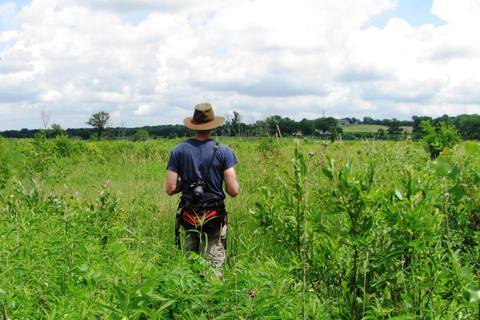
(Credit: USFWSmidwest via Flickr)
In Canada, tools such as the federal Species at Risk Act provide legal protection for animals and plants that are at risk of extinction. These mandatory tools were brought into force because business-as-usual industrial and development practices were failing to sufficiently safeguard species from the habitat loss that leads to endangerment. Many other countries have species at risk legislation as well, recognizing not only the moral imperative but also the many ecological and economic reasons it makes sense to steward the ecosystems that provide homes for animals and provide us with clean water, breathable air, food and the basis of much of our well-being.
The upcoming federal election presents an opportunity to reflect on how the country is faring with its responsibility to protect Canada's imperilled wildlife under the act.
Here's a quick primer on the act. A species must be listed under it to receive protection measures, but there is room for politics and socio-economic factors to trump science in the listing process. Next, the habitat that a species needs to survive/recover must be identified in a recovery strategy. This is called its critical habitat. Lastly, government needs to create an action plan based on the recovery strategy and, of course, implement it, which usually means protecting habitat as this is the primary cause for species decline.
Let's take a glance at Canada's actions to date, and at present, under each of these steps.
Listing
Sadly, the listing process has resulted in many species being left off the list. About 151 species have been scientifically assessed as at risk but are caught in the listing limbo. You can read more about them here.
Identifying critical habitat
Since the act was passed in 2002, the federal government has had a pretty dismal track record for identifying critical habitat. Often, critical habitat has only been identified when environmental organizations like the David Suzuki Foundation have pressed government to do so through legal challenges. Over the years, as the Foundation and EcoJustice won many of these cases in court (see, for example) government began to respond to our comments on deficient critical habitat identification by revising recovery strategies accordingly. [You can read an instance where this happened re: our comments on the right whale here.]
In addition to the systemic failure to identify critical habitat, chronic delays have plagued Environment Canada in meeting its legal requirements to complete recovery strategies and management plans. The federal government recently acknowledged this by releasing a Three-Year Recovery Document Posting Plan to address 189 species lagging behind the mandatory release dates.
Protecting critical habitat
It might come as little surprise if you've read this far that habitat protection has also required engagement and/or legal challenges from environmental groups. Recently we've had some successes -- for example, in ensuring that the killer whale's habitat definition includes their food supply and the quality of their marine environment. The case is still in court. Using the beluga's critical habitat identification, the Foundation recently helped the St. Lawrence beluga to get a break.
As you can see, getting the government to implement the SARA takes a lot of work on our end. Federal recalcitrance to protect habitat is compounded by constant pressure from industry to weaken the act. For example, in a 2103 letter obtained under the Freedom of Information Act, the Canadian Association of Petroleum Producers asked the federal government to include socio-economic considerations in critical habitat identification and includes the objective of "enabling policy decisions to strike an appropriate balance between conservation of species and socio-economic considerations, informed by science."
Ah, the fallacy of "balance" as a means to protect at-risk species, and industry's (well-resourced) fears that socio-economics might be overlooked -- these in a country wherein one threatened caribou population in Alberta that is listed under SARA is struggling to survive in a range that has been over 95 per cent disturbed by oil and gas activity.
Canada's federal government, as well as the provinces, are failing to take the steps needed to protect habitat from coast to coast to coast. Governments often substitute habitat protection with impact mitigation (i.e., making things less bad instead of better. See Why Canada Is Failing to Protect Species at Risk for a more in-depth look at this trend). And, they address symptoms (i.e., predation) instead of root causes (i.e., habitat loss).
Ultimately, if Canada is to maintain its rich biological diversity, we need a federal government that has the political will to push past the framing of balance and mitigation, list species that are at risk, identify their habitat based on science and, most importantly, protect the critical habitat they need to survive and recover.
Hey! Want more DSF? Join David Suzuki on Facebook
September 15, 2015
Green Party environmental platform
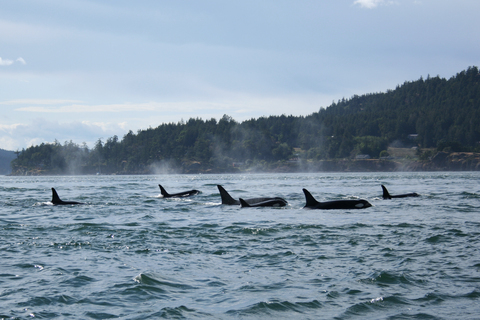
As Canadians prepare to head to the polls on October 19, federal party leaders are recognizing that this election will shape our country for years. With United Nations climate talks in Paris slated to begin only 40 days after the election and with polls showing the majority of Canadians support strong action to protect the climate and environment, parties are releasing environmental platforms they hope will speak to the values and priorities of voters. The Green Party is the latest major party to release plans for the environment.
The Green Party's environmental platform is focused on four main issues: climate change, building a sustainable economy, oil sands development and pipelines.
Climate Change -- The Green Party includes short- and long-term targets in its environmental platform, first aiming to reduce carbon emissions by 38 per cent by 2025 (40 per cent below 2005 levels) with the ultimate goal of an 83 per cent reduction by 2050 (80 percent below 1990 levels). The Greens also call for a "science-based national climate strategy", which includes ending more than $1 billion in annual subsidies given to the fossil fuel industry and working with the provinces to put a national price on carbon using a "Carbon Fee and Dividend Plan." This policy would place a fee on carbon emissions and redistribute the money to every Canadian over the age of 18 through an annual cheque.
The Green Party also explicitly includes transportation in its plans to act on climate change, pledging to invest in Canada's network of railways. The party advocates for transporting oil by rail rather than pipeline and for improved safety through the implementation of strict standards for rail transport. The Green Party also promises to invest $764 million a year in improvements to VIA Rail by 2020, aiming to link Canadian communities through high-speed commuter rail networks where possible.
Finally, the Green Party pledges to legislate a national phase-out of coal power in Canada and to end thermal coal exports. The party also promises to position Canada as a global leader on climate action through participation in the UN Paris talks in December, if elected.
Sustainable Economy -- The Green Party pledges to invest in Canada's rapidly growing renewable-energy and clean-technology sectors, both expanding the capability of communities to generate renewable power and providing Canadians with "good, local jobs." If elected, the party plans to provide training to laid-off oil sands workers to help them apply their trades, education and experience to building renewable-energy infrastructure.
Oil sands Development -- Citing the volatility of oil markets, the Green Party's environmental platform advocates for diversification of the Canadian economy by ending fossil fuel industry subsidies and investing in the renewable-energy and clean-tech sectors. The party does not, however, call for an immediate shutdown of oil sands operations. Instead, it proposes increasing Canada's ability to refine oil with the goal of creating new jobs at home. The Green Party states that most of the bitumen in the oil sands needs to remain in the ground to avoid the worst impacts of climate change and promises to work with First Nations communities that are affected by oil sands development.
Pipelines -- Citing a review by the Ontario Energy Board, which concluded the risks of the Energy East pipeline outweigh the benefits, and West Coast opinion polls that show majority opposition to pipeline expansion, the Green Party opposes all major pipeline projects proposed for Canada. The party states that the bitumen exported from the oil sands is "impossible to clean up if spilled" and that the services provided by Canada's coastal ecosystems are too valuable to put at risk.
The David Suzuki Foundation has long argued for a national price on carbon in Canada, investment in renewable energy and clean technology and the phase-out of coal power. We believe that strong and immediate action on climate change is necessary as Canadians are already feeling its impacts through increasing extreme weather events (droughts, forest fires, storms, etc.), among other consequences. We will provide summaries of the major parties' environmental platforms as they become available.
On October 19, voting is the most important thing you can do to protect the people and places you love. Familiarize yourself with the parties' platforms and vote for the candidate who best represents the values and vision of the Canada you want.
YES, I'm voting on October 19.
Hey! Want more DSF? Join David Suzuki on Facebook
September 13, 2015
How to be a nature teacher

Every person should be a nature teacher. Find a way to lead or encourage young ones in your life. (Credit: Lindsay Coulter)
Kids are smart and insightful -- especially when exposed to nature.
I recently took my son and 13 other three to five year olds on a bus trip to a favourite local park (with help).
I showed them a specimen of Equisetum, also known as "horsetail" -- a "living fossil." I said, "Horsetail is a prehistoric plant. It's been around since the time of the dinosaurs." (Kid's love dinosaurs, right?)
Three-and-a-half-year-old Sebastian asked, "Why?" I said, "That's a great question!" But didn't offer an answer.
Minutes later Sebastian said, "Maybe it's not allergic to people?"
How profound.
Richard Louv says every teacher can be a nature leader.
I take that a step further. Every person should be a nature teacher.
I pitched the hike idea to my son's new daycare because they want to get the kids outside more. For our first of what I suspect will be many hikes, I promised them a beaver lodge, bat and mason bee houses, turtles, ducks, bunnies and more. (I think a few expected cheetahs.)
The best part?
The rain stopped and we had the entire park to ourselves. We picked blackberries, ate snack in the grass -- a simple way to connect with nature -- and breathed the fresh air. (I saw the "nap sheet" for that day: 14 of 25 kids napped...)
The most challenging part?
A bathroom pit stop with 14 kids in muddy buddies!
What's your part?
Back to school shouldn't mean back inside.
If you have school-aged children:
Join our #SuzukiSuperhero Challenge. Beginning September 21, you'll receive a fun outdoor activity each week for four weeks, complete with step-by-step instructions, and be automatically entered to win prizes. Activities are adapted from our educational guide for kids in Kindergarten through Grade 8.
If you have an infant, toddler or preschooler:
Try my five ways to connect young kids with nature. Or encourage your daycare to get back outside. You could lead, chaperone or participate in an outdoor nature adventure.
If you don't have young kids:
Find a way to lead or encourage young ones in your life -- grandchildren, nieces and nephews, or neighbours -- to explore the outdoors.
Children need opportunities to do some of their learning away from school -- maybe at a park or community garden. It doesn't make sense if children only learn about the great outdoors inside a classroom.
What's your favourite outdoor activity to experience with kids?
Sincerely, Lindsay Coulter
A fellow Queen of Green
Hey! Want more DSF? Join David Suzuki on Facebook
September 11, 2015
Join the back to school superhero challenge

Children today spend less time outdoors than any generation in human history. They're also our future superheroes -- so we need to make sure they're well equipped to protect our planet!
Hey! Want more DSF? Join David Suzuki on Facebook

David Suzuki's Blog
- David Suzuki's profile
- 247 followers



